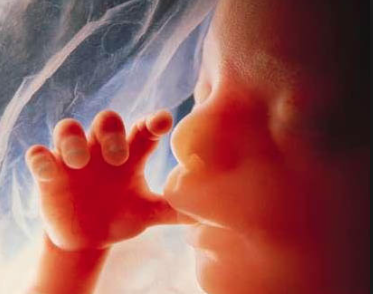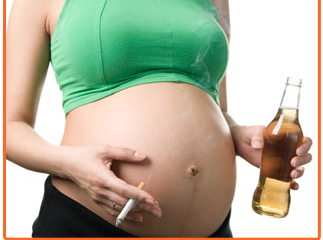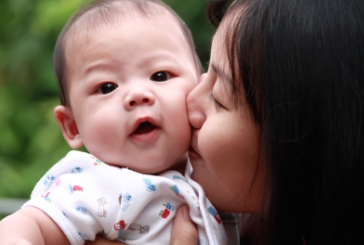When I first read ” ‘G’ was a pregnant 22-year-old […]” I paused and laughed and already knew I would be interested in this article because my first initial is “G” and I’m also 22. Fortunately, no, I am not pregnant, but I digress.
The real “G” is addicted to glue sniffing and other solvents and has already surrendered three children to family services, two of whom were both physically and mentally damaged as a result of their mother’s addiction (Thomas, 201). Due to “G” ’s history, the doctor’s believed it was in the unborn child’s best interest to place “G” in a treatment facility and monitor “G” ’s activity. However, the Manitoba Court of Appeal ordered that “G” be released from the treatment facility on the grounds that every individual has the right to security of the person. Fortunately, the baby was born healthy and “G” is no longer suffering from her addiction.
Dilemma
The dilemma in this case is that of non-maleficence vs. autonomy. “G” ’s physicians have a duty to protect the unborn child. On the other hand, it is within “G” ’s legal right to do whatever she wants to her body. She does not have the right, however, to abuse her baby and inflict harm on another human being, which is exactly what she would be doing if she continued to abuse solvents and sniff glue.
I believe that “G” ’s right to autonomy was rightfully outweighed in this situation. In terms of moral status and answering the question of whom we ought to be morally responsive, society has a duty to be morally responsive to the unborn child who cannot speak for itself. In addition, based on the Theory of Human Properties from Principles of Biomedical Ethics, all humans have rights because they are human; no human is excluded because it is a fetus, has brain damage, has a cognitive anomaly, etc.
I am not sure what the laws on substance abuse are in Canada, however in the United States, “18 states consider substance abuse during pregnancy to be child abuse under civil child-welfare statutes, and 3 consider it grounds for civil commitment” while, “15 states require health care professionals to report suspected prenatal drug abuse, and 4 states require them to test for prenatal drug exposure if they suspect abuse” (Guttmacher, 2015). I hope that more states and Canadian provinces will implement these laws in the near future.
For me personally, there was nothing to debate in this case, but then I ready Alexi Msays’ post, and I realized that if I were “G”, it would be completely wrong to have treatment forced upon me. As mentioned in the case study, ” […] feminists [argued] that the woman’s right to control her own body, whether pregnant or not, must be provided the strongest possible protection” (Thomas, 201). However, “G” ’s body is no longer solely hers. The child did not ask to be born, let alone to be born both physically and mentally impaired. “G” is fully capable of knowing how to prevent herself from getting pregnant, and she could have easily made the decision to abort the baby. However, since she has decided to keep the baby, “G” has a duty to keep her body healthy for the sake of the baby’s health as well. Fortunately, that duty was fulfilled, but on “G” ’s own accord.
Works Cited
Beauchamp, Tom L., and James F. Childress. Principles of Biomedical Ethics. 7th ed. N.p.: Oxford University Press, 2012. Print.
Guttmacher Institute. “State Policies in Brief: Substance Abuse During Pregnancy.” Guttmacher Institute. Guttmacher Institute, 1 Jan. 2015. Web. 30Jan. 2015.<http://www.guttmacher.org/statecenter/spibs/spib_SADP.pdf>.
Thomas, John, Wilfrid J. Waluchow, and Elisabeth Gedge. Well and Good: A Case Study Approach to Health Care Ethics. 4th ed. Peterborough, Ontario: Broadview Press, 2014. Print.
Images:
http://www.russellmoore.com/2011/07/18/an-open-letter-to-an-unborn-baby/
https://richardwiseman.files.wordpress.com/2012/11/scales.jpg
http://www.treatment4addiction.com/images/article_images/addiction_drug_pregnancy.jpg
https://101careersinpublichealth.files.wordpress.com/2011/08/baby-and-mom-by-phanlop88-freedigitalphotos.jpg




I think you make a good point that once a mother decides to keep her baby, she must accept that her body is not only her own, but also that of her future child’s. Thus, she should live her life for the remaining months of her pregnancy in a way that results in not only her own satisfaction and health, but also that of a developing, highly delicate fetus. Also, you sited some laws and regulations in many of our states. This is an excellent way to make the point that it can be, and maybe should be, perceived that common moralities such as autonomy and self-determination, which previously belonged to the not pregnant woman, now should give way to the particular moralities of motherhood. If she had decided to abort, then she would have not had these moralities, but now she does. Thus, she is morally obligated to engage in behaviors that are beneficial to her health and that of her fetus and future child’s. Once the mother decides to carry the child to term, she should consider the rights of another human being since she has implicitly decided that her fetus will very soon be a full human. Overall, I agree with you that the state has the right to encourage, and force if needed, the mother to refrain from and seek treatment for destructive behaviors.